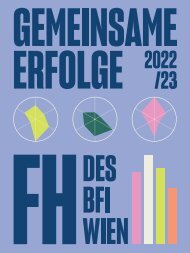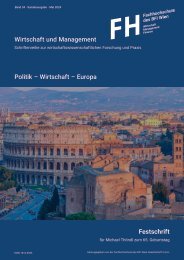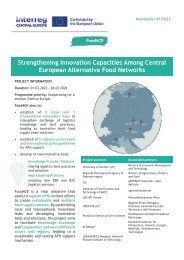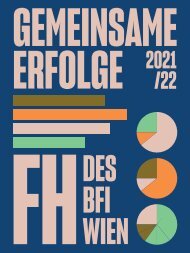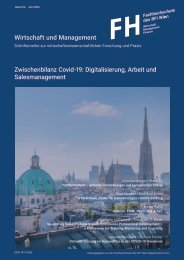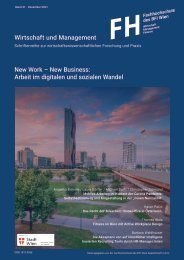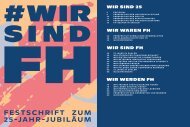The EU, the EEU, and the War in Ukraine: Political Risks and Management Options
This special issue entitled “The EU, the EEU, and the War in Ukraine: Political Risks and Management Options” is published within the framework of the Jean Monnet Network project “The EU and the EEU: Between Conflict and Competition, Convergence and Cooperation” (EUCON). The aim of this project co-funded by the Erasmus+ programme is to explore the complexity of relations between the European Union and the Eurasian Economic Union.
This special issue entitled “The EU, the EEU, and the War in Ukraine: Political Risks and Management Options” is published within the framework of the Jean Monnet Network project “The EU and the EEU: Between Conflict and Competition, Convergence and Cooperation” (EUCON). The aim of this project co-funded by the Erasmus+ programme is to explore the complexity of relations between the European Union and the Eurasian Economic Union.
- No tags were found...
You also want an ePaper? Increase the reach of your titles
YUMPU automatically turns print PDFs into web optimized ePapers that Google loves.
Oxana Karnaukhova<br />
European Union is <strong>in</strong>clud<strong>in</strong>g closer cooperation with <strong>the</strong> CA5 on its agenda for global leadership.<br />
Russia’s renewed <strong>in</strong>terest <strong>in</strong> <strong>the</strong> region was embodied by its jo<strong>in</strong><strong>in</strong>g <strong>the</strong> Central Asian Cooperation<br />
Organisation <strong>in</strong> 2004. However, at that time, <strong>the</strong> emerg<strong>in</strong>g competition with <strong>the</strong> Eurasian<br />
Economic Community led to CAC’s merger with EuroAsEC <strong>in</strong> 2005 <strong>and</strong> fur<strong>the</strong>r fragmentation of<br />
<strong>the</strong> Central Asian geo-economic l<strong>and</strong>scape. Central Asia is thus becom<strong>in</strong>g <strong>in</strong>volved <strong>in</strong> <strong>the</strong> arena<br />
of competition between external powers.<br />
<strong>The</strong> collapse of CACO <strong>in</strong> 2005 led to a deterioration of cooperation between <strong>the</strong> Central Asian<br />
states <strong>and</strong> <strong>the</strong> disappearance of <strong>the</strong> regional dialogue format. Whereas <strong>the</strong> function<strong>in</strong>g of<br />
<strong>in</strong>tegration structures – albeit <strong>in</strong>effective – facilitated regular meet<strong>in</strong>gs, negotiations <strong>and</strong><br />
exchanges of views between <strong>the</strong> states, after 2005 <strong>the</strong> leaders of <strong>the</strong> Central Asian states meet<br />
only dur<strong>in</strong>g bilateral visits or summits with<strong>in</strong> <strong>the</strong> CIS, which was conceived as a platform for<br />
preserv<strong>in</strong>g historical-cultural, educational <strong>and</strong> humanitarian dialogue, but did not <strong>in</strong>clude effective<br />
mechanisms for economic (re-)<strong>in</strong>tegration. This widens <strong>the</strong> gap between <strong>the</strong> states, reduces<br />
<strong>the</strong> chances of f<strong>in</strong>d<strong>in</strong>g rational solutions to <strong>the</strong> most press<strong>in</strong>g issues on <strong>the</strong> regional agenda <strong>and</strong><br />
paralyses cooperation between <strong>the</strong> countries of <strong>the</strong> region (Krapohl/Vasileva-Dienes 2020).<br />
Serv<strong>in</strong>g as a model for successful <strong>in</strong>tegration <strong>and</strong> be<strong>in</strong>g a recognized leader, <strong>the</strong> European Union<br />
is still a relatively new player <strong>in</strong> <strong>the</strong> region. It had limited contacts with <strong>the</strong> Central Asian states<br />
<strong>and</strong> a few <strong>in</strong>terests <strong>in</strong> close <strong>in</strong>teractions before <strong>the</strong> 2000s (European Commission 1995). By<br />
nowadays <strong>the</strong> engagement is seen as connected with different development projects for fund<strong>in</strong>g<br />
<strong>and</strong> recently added security concerns <strong>in</strong>clud<strong>in</strong>g Ch<strong>in</strong>a (<strong>EU</strong> Security Strategy 2007; European<br />
Council 2012).<br />
S<strong>in</strong>ce <strong>the</strong> <strong>in</strong>dependence of Central Asian (CA) states, <strong>the</strong> <strong>EU</strong> has gradually <strong>in</strong>tensified its<br />
<strong>in</strong>volvement <strong>in</strong> <strong>the</strong> region through <strong>the</strong> Official Development Assistance (ODA). Follow<strong>in</strong>g <strong>the</strong><br />
OECD dataset, <strong>the</strong> ODA has been distributed unevenly across <strong>the</strong> CA states. <strong>The</strong> difference<br />
reflects <strong>the</strong> selectivity of targets <strong>and</strong> specific <strong>in</strong>terests of <strong>the</strong> donor. One of <strong>the</strong> largest recipients<br />
of <strong>the</strong> <strong>EU</strong> <strong>in</strong>stitutions’ ODA appears to be Kyrgyzstan with about US $593 million of grants <strong>and</strong><br />
loans by 2018 ma<strong>in</strong>ly aimed at <strong>the</strong> logistic projects. Tajikistan allocated $622 m. for education,<br />
public health, <strong>and</strong> rural development, followed by Uzbekistan – $263 m. Kazakhstan has ga<strong>in</strong>ed<br />
$300 m. for development assistance. F<strong>in</strong>ally, <strong>the</strong> smallest recipient of <strong>the</strong> <strong>EU</strong> ODA is Turkmenistan<br />
with around $104 m. assistance 1 . Thus, <strong>the</strong> <strong>EU</strong> is one of <strong>the</strong> major donors for <strong>the</strong> region with<br />
competitors from Russia, <strong>the</strong> USA, <strong>and</strong> Ch<strong>in</strong>a. For comparison, Russia allocated for <strong>the</strong> Kyrgyz<br />
Republic about $1,042 bn., naturally <strong>in</strong>creas<strong>in</strong>g its <strong>in</strong>vestments after 2015 via <strong>the</strong> Russian-Kyrgyz<br />
Development Fund, while Tajikistan was <strong>the</strong> primary ma<strong>in</strong> assistance object for <strong>the</strong> USAID.<br />
<strong>The</strong> Strategy 2007 was an agenda for global <strong>and</strong> comprehensive positive leadership promotion,<br />
whose efficiency was driven by <strong>the</strong> “<strong>the</strong> political goes first” idea: a state will<strong>in</strong>g to apply <strong>and</strong> be<br />
qualified for economic assistance has to answer to strict terms of <strong>the</strong> Europe-oriented political<br />
1 Source: OECD, Aid (ODA) disbursements to countries <strong>and</strong> regions.<br />
42 Wirtschaft und <strong>Management</strong> · B<strong>and</strong> 33 · März 2023




